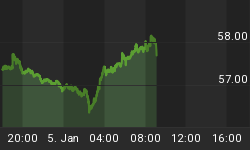The following is part of Pivotal Events that was published for our subscribers October 21, 2011.
SIGNS OF THE TIMES:
"Three Reasons Not to Fear Recession"
~ Wall Street Journal, October 3
The reasons were that businesses were "lean" and not overextended. Macro-shocks were fading and the central banks "will fight hard to avoid recession".
The article seemed to overlook that most governments are "fat" and overextended. We would add that the overextension of government is one of the greatest in history.
Of course, the irony has been that interventionist economics has only been used because it transfers immense wealth and power to the state. Despite this iniquity, many governments are close to or are technically insolvent.
Essentially, they have become fiscally impaired due to an impractical ambition to prevent another depression. As Keynes and others have preached - wonders can be achieved by fiscal and interest rate manipulations.
The iniquity of the predatory state was nicely summed up by Adam Smith in 1776:
"It is the highest impertinence and presumption... in kings and ministers, to pretend to watch over the economy of private people, and to restrain their expense... They are themselves always, and without any exception, the greatest spendthrifts in the society. Let them look well after their own expense, and they may safely trust private people with theirs. If their own extravagance does not ruin the state, that of their subjects never will."
~ The Wealth Of Nations, Book II, Chapter III, p.346, para. 36
"Pimco's Gross in Strategy U-Turn"
~ Financial Times, October 13
Bill Gross was bearish on long treasuries going into the bottom at 117 in February. He was convinced that the bull market in commodities would continue. Our work expected the hot stuff to peak around April.
Now, under the pressure to generate some better returns he has turned positive. Mr. Gross has been and still is in a difficult position.
"Junk bond yields have soared since May's all-time low"
~ Financial Times, October 13
The article concluded that the market was again pricing "outsized risk".
That may be the case, but after some relief junk could adjust for even more risk.
Perspective
On the longer term, the highs in late April - early May were likely to end the business cycle that arose out of the end of the panic in March 2009.
In January, our Momentum Peak Forecaster signaled that the speculative surge could complete by around April. Using the outstanding examples of 1973 and 1980, the recession would start virtually with the end of speculation.
We have since concluded that the recession started in May.
On the nearer term, our work on credit spreads indicated that some heavy liquidation was possible in the fall. Spread products, stocks and commodities came under a lot of pressure from August into late September.
That this did not continue was indicated by the number of attempts by the S&P to break support and the inability of the gold/silver ratio to take the extra leg up.
A very key point was that the dollar's rally became overbought at the end of September. Relief was possible and the October 4th Pivot noted "it could take a week or so to get the DX down and all the disasters up."
Ross's ChartWorks of October 12th provided a thorough technical review of the DX and stocks, which seems to be a good roadmap on the nearer-term.
Outlook
The street is still geared for big volatility, but a positive trading range seems likely. This could run into early in the year, and the ChartWorks will be monitoring the opportunities.
These pages have been reviewing the "all-one-market" phenomenon for many years. This covers financial and tangible assets going up or down - together - opposite to the moves in the DX.
The announcements of "rescues" and "stimulus" are becoming tedious, but to the impartial reviewer - interesting. If the announcement is made when the dollar is declining the "stimulus" will be celebrated with a jump in asset prices. Sadly, the opposite occurs as well.
To be serious, policymakers are becoming more dangerous in their endless experiment to prevent bad things from happening. The danger is that intervention has become a one-way street without any of the policy chips being taken off the table.
In engineering terms this is a positive feedback mechanism that will accelerate itself to mechanical destruction. The latest version of fractional reserve banking has no deliberate braking mechanism that will curb speculative excesses. Saving the financial world may still be the ostensible goal, but underneath this veneer of respectability these guys are out to prove that their theories really work.
What's more, they won't willingly quit until their tinkering blows everything up. That they have risked most of the wealth of the country is being understood by more and more people.
Speculation ran to a classic bubble that completed in 2007 and with the first post-bubble recession starting virtually with that bear market it signaled the start of a serious contraction.
It seems probable that the second recession started in May. This could take some time to be recognized, but when it does whatever remains of central bank credibility will disappear.
Credit Markets
Our last Pivot (October 4th) noted that the rise in bond prices was becoming overdone. Also, the "Twist" was adding to enthusiasms on a scheme that had failed so dramatically in the 1960s.
The October 12th ChartWorks included an update on the bond action, which was outstanding enough to trigger a number of Upside Exhaustions. The decline in price from 145.47 to 138.25 is significant. Of interest is that the rally was similar to the one with the 2008 financial crash. The move has been rather fast and could take a rest.
However, it is now in an intermediate downtrend.
This, along with some stability in the corporate market could narrow spreads for a while.
Link to October 22 'Bob and Phil Show' on Howestreet.com: http://talkdigitalnetwork.com/2011/10/hope-for-europe















